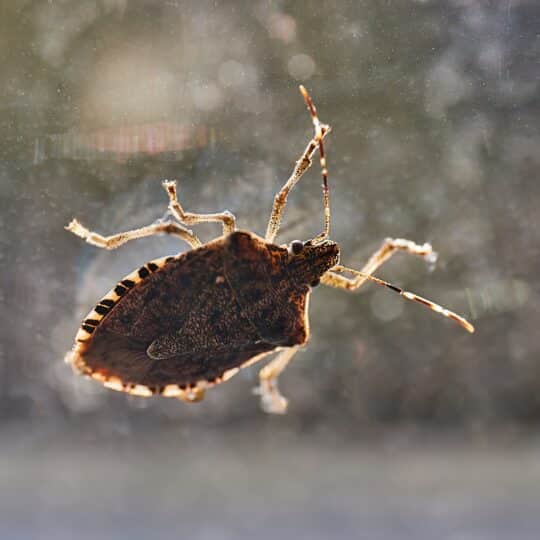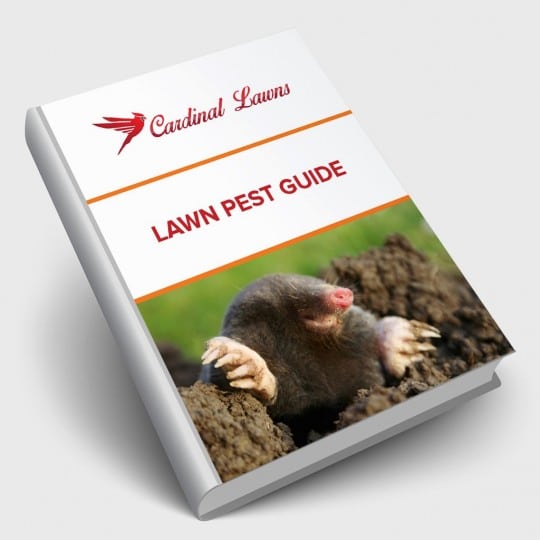Overwintering Pests
How to Identify & Prevent Them
Posted
November 10, 2022

While it may have been unseasonably warm so far this fall, colder weather is coming. With winter approaching, you may think many pests die off in the cold and you don’t have to worry about control options. Well, you’re half right. Some insects—like mosquitoes and gnats— are less of an issue in the winter. However, others may be hibernating in the warmer depths of your soil and home. Learn more about these overwintering pests and what to do about them.
Types of Overwintering Pests
Like many living creatures, certain insects head toward warmer climates to take shelter during the colder months. These shelters could be beneath the surface of your lawn and garden or the dark and insulated areas of your walls and attic space. Here are some of the pests you may find desperately searching for shelter this fall:
- Boxelder Bugs. If you have boxelder or maple trees in your yard, you’re more likely to find boxelder bugs around your lawn and home. They feed on the tree seeds in the summer and start searching for their winter home in the fall. You’ll notice their long black bodies and red markings. They don’t harm you or cause too much damage. They are known to emit an odor and stain surfaces when threatened.
- Lady Bugs. They look so cute with their tiny red bodies and black spots. Some people think they’re good luck. However, they have been known to bite and leave an odor that is very unlady-like.
- Cluster Flies. They originate within an earthworm, so seeing them around is not always an indication of decay. So that’s the good news. The bad news, while they prefer the outdoors, they’re not afraid to seek shelter from the elements. When they do, they typically stay in clusters. You’re more likely to find them in areas of your house warmed by the sun.
- Seed Bug. The brownish bugs happily feed on pine cones throughout the summer and look for a place to huddle in the winter. Sometimes it’s under the bark of the pine tree. Other times it’s through the small gaps in your home. They also prefer the sunny side of your house and can gather in large masses but are otherwise harmless.
- Stink Bug. These brown shield-shaped bugs dine on garden veggies, fruit trees, and ornamental plants throughout the summer. But then they venture into your home and stink up the place if you stress them out.
You may see some of these bugs throughout the year since they become active in the spring, feed outside in the summer, prepare for winter in the fall, and spend the cold months indoors. So, how did they get indoors?
Trespassing Pests
If you start to see these bugs flying around your living room, bedrooms, and kitchens, chances are they got in on their own. It’s unlikely you left the door open and welcomed them inside. However, leaving cracks in doors and windows unattended is almost the same thing.
If you see these bugs indoors in the spring, chances are they spent the entire winter in there somewhere. If you see them in the fall, they’re looking to return to that hiding spot. Either way, they entered through an opening that needs to be filled.
- Start by searching the area where you’ve found them. If it’s in between a closed window and its screen, there’s a good chance that the screen has a tear in it somewhere. Look around the window itself, inside and out. Seal any gaps or crevices in the molding, sill, or frame.
- Next, check the doors for any openings. Make sure doors to the outdoors are properly sealed underneath.
- Inspect the areas around pipes and cables running into the house, gutters, awnings, and any cracks in the siding. Repair and seal any openings you find.
- Even with the proper seal, there’s still a chance insects can find their way in. You can reinforce this seal by applying a preventative treatment product around the perimeter of your home.
- Areas like attic vents need to be open to some degree to do their job. However, you can back them with a fine mesh screen to prevent insects and other pests from gaining entrance.
What you use to seal the cracks, crevices, and openings around your house makes a difference:
- Caulk areas around windows, doors, and joints.
- Insulate long gaps under soffits and siding.
- Screen area behind vents.
Prep your home properly to prevent unwanted pests from entering.
Professionally Preventing Overwintering Pests
If you’ve done what you can to help prevent overwintering pests from infesting your home, but you still see signs of bugs throughout the year, it’s time to call a pro. Companies like Cardinal Lawns know where to look for these intrusive pests. Armed with residential and commercial experience, no job is too large or small. Call for a thorough inspection of your home and more specific tips on how you can prevent pests from spending the winter with you.

Download Your FREE Lawn Pest Guide
Pests become most prevalent during the heat and humidity of summer. Take some time to learn about the signs of infestations before any damage can be caused to your landscape. This handy guide will teach you how to spot common lawn pests and how to keep them from causing harm to you and your property.